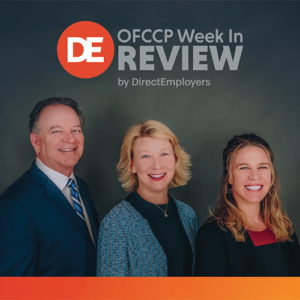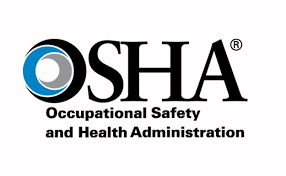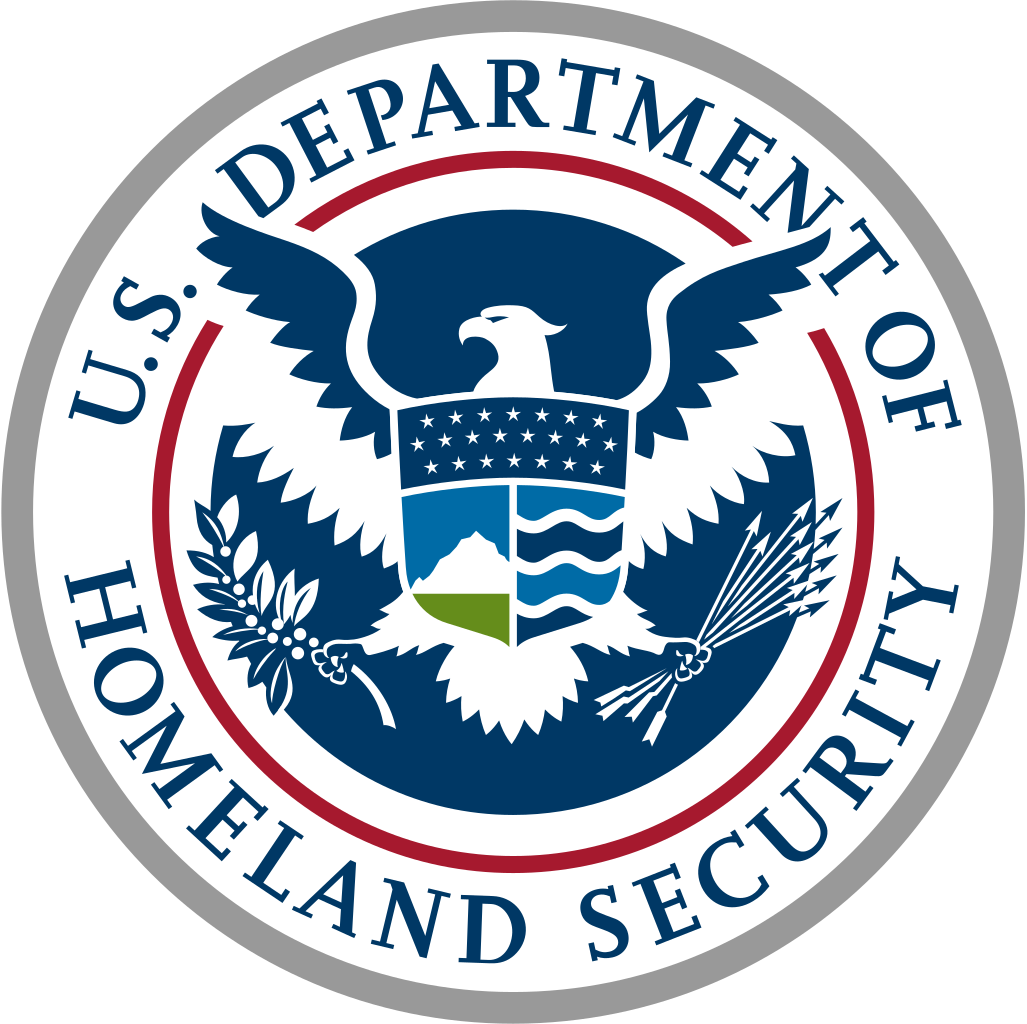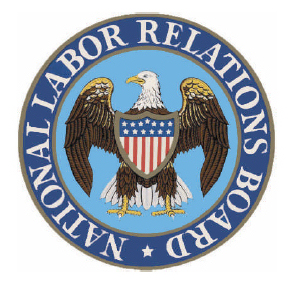
- Vaccine Mandate Moves to White House for Review
- Biden Clipped ICE’s Wings: Homeland Security Memo Redirected Enforcement Efforts Towards “Unscrupulous Employers” and Away From Illegal Aliens…and Ends Mass Raids of Employer Facilities
- EEOC Commissioner Sonderling Hit a Home Run Discussing All Things EEOC With DirectEmployers’ Members
- EEOC Updated Guidance on COVID-19 Vaccinations
- NLRB Median Age of Pending Cases Continues Downward Trend
Tuesday, October 12, 2021: Vaccine Mandate Moves to White House for Review

The Rule codifies a piece of President Biden’s COVID-19 Action Plan. The six-part plan starts with “Vaccinating the Unvaccinated,” in which the President directed OSHA to issue an emergency safety & health standard requiring vaccinations of employers with 100 or more employees.
How We Got Here
We unpacked President Biden’s controversial plan in two different stories from September 9, 2021:
Note: At the time of the September story, we reported a remaining 80 million unvaccinated adults. President Biden announced via a press release on Thursday, October 14, 2021, that the number of unvaccinated adults now sits at 66 million.
Tuesday, October 12, 2021: Biden Clipped ICE’s Wings: Homeland Security Memo Redirected Enforcement Efforts Towards “Unscrupulous Employers” and Away From Illegal Aliens…and Ends Mass Raids of Employer Facilities

The Secretary of The Department of Homeland Security (DHS), Alejandro N. Mayork, directed U.S. Immigration and Customs Enforcement (ICE), U.S. Customs and Border Protection (CBP), and U.S. Citizenship and Immigration Services (USCIS) to, in his words, “take actions to promote a fair labor market by supporting more effective enforcement of wage protections, workplace safety, labor rights, and other employment laws and standards.”
The Secretary issued a 3-page Memorandum on Worksite Enforcement (Memo) titled: “The Strategy to Protect the American Labor Market, the Conditions of the American Worksite, and the Dignity of the Individual.” The Memo reads like a labor manifesto and excoriates unknown and unnamed employers as “unscrupulous” or “exploitive” and places the blame on them for allegedly first attracting and then exploiting illegal aliens:
“…we can maximize the impact of our efforts by focusing on unscrupulous employers who exploit the vulnerability of undocumented workers. These employers engage in illegal acts ranging from the payment of substandard wages to imposing unsafe working conditions and facilitating human trafficking and child exploitation. Their culpability compels the intense focus of our enforcement resources. In addition, unscrupulous employers harm each worker competing for a job. By exploiting undocumented workers and paying them substandard wages, the unscrupulous employers create an unfair labor market. They also unfairly drive down their costs and disadvantage their business competitors who abide by the law. We can most effectively protect the American labor market, the conditions of the American worksite, and the dignity of the individual by focusing our worksite enforcement efforts on unscrupulous employers. This is how we will proceed.”
The Memo then proceeded to set out “Fundamental Principles,” ordered up a “Policy Review,” and issued “Immediate Guidance” (among other things, ending mass raids of employers to arrest and deport illegal aliens).
Fundamental Principles were to:
- “Reduce the demand for illegal employment by delivering more severe consequences to exploitative employers and their agents;
- Increase the willingness of workers to report violations of law by exploitative employers and cooperate in employment and labor standards investigations; and,
- Broaden and deepen mechanisms for coordination between the Department of Homeland Security and the Department of Labor, the Department of Justice, the Equal Employment Opportunity Commission, the National Labor Relations Board, and state labor agencies.” [Editor’s Note: DHS’ concern here is reportedly that the missions of the employment agencies may be adversely impacted if DHS were to deport illegal aliens needed as witnesses at trials U.S. labor agencies were prosecuting.]
Policy Review ordered up:
- a review of several specific policies (and invites reporting of) any policy that “may impede non-citizen workers, including victims of forced labor, from asserting their workplace rights”; and
- the development of agency “plans” which would “…provide for the assistance non-citizen victims and witnesses need to participate actively in the investigations and consider ways to ensure that non-citizen victims and witnesses generally are not placed in immigration proceedings during the pendency of an investigation or prosecution.”
Immediate Guidance ordered:
- DHS to cease mass worksite raids begun in the George W. Bush Administration, and continued in the Obama and Trump Administrations resulting in the arrest and deportation of millions of illegal aliens:
“The deployment of mass worksite operations, sometimes resulting in the simultaneous arrest of hundreds of workers, was not focused on the most pernicious aspect of our country’s unauthorized employment challenge: exploitative employers. These highly visible operations misallocated enforcement resources while chilling, and even serving as a tool of retaliation for, worker cooperation in workplace standards investigations.” [Editor’s Note: DHS’ true concern here is that the raids were too effective to quickly remove large numbers of illegal aliens from the U.S. and were also often highly publicized as a deterrent ICE thought effective through three presidential administrations to stop further in-bound migration of illegal aliens into the U.S. in search of jobs.]
- DHS to consider on a case-by-case-basis whether to waive deportation of a captured illegal alien as a further remedy for the violation of the workers’ employment law rights (beyond the remedies the underlying labor statute already affords), or in exchange for testimony against the employer a labor agency is prosecuting under its wage protection, or safety or civil rights, etc. authority.
“Requests for prosecutorial discretion. I understand the Department of Labor has recently requested support in certain ongoing workplace standards investigations, including by asking that OHS (sic) consider whether to exercise prosecutorial discretion for workers who are victims of, or witnesses to, workplace exploitation. (emphases added) These individual requests should be considered on a case-by-case basis, weighing all relevant facts and circumstances. In evaluating these requests, the legitimate enforcement interests of a federal government agency should be weighed against any derogatory information to determine whether a favorable exercise of discretion is merited.” [Editor’s Note: DHS was previously known as the “Office” of Homeland Security (OHS) when President Bush (#43) created it within the U.S. Department of Agriculture. The author of the Memo is apparently a long-term veteran of Homeland Security, apparently had a momentary writing lapse and reverted to use of DHS’ original name, and the many reviewers and proofers did not notice in the rush to publish this controversial memo after news of its existence leaked to the press].
Secretary of Labor Marty Walsh released a statement including the comment that the Department of Labor “stands ready to continue and expand our work with the Department of Homeland Security to ensure all people can work free from exploitation and retaliation. Unscrupulous employers can no longer build their businesses on the backs of exploited people.”
Tuesday, October 12, 2021: EEOC Commissioner Sonderling Hit a Home Run Discussing All Things EEOC With DirectEmployers’ Members

As the Commissioner pointed out, we have covered a lot of the EEOC happenings in our Week-In-Review (WIR), so we can now provide the links to more details on each topic:
EEOC By The Numbers
See WIR “EEOC Touts $535 Million in Discrimination Recoveries in FY 2020” to see the numbers from FY 2020 (as we await FY 2021’s numbers.) In addition to the recoveries, the Agency reportedly worked hard in the education and outreach space.
See WIR “Retaliation Remained the Top EEOC Charge in FY 2020” to see the breakdown of the 67,488 charges the EEOC received in 2020. The Commissioner noted that charges of sex discrimination (which includes pregnancy, sexual orientation, and gender identity) are down for the 3rd consecutive year.
Bostock Guidance
When host Candee Chambers, DE’s Executive Director, asked if the Commissioner could expand on the Bostock guidance, the Commissioner directed the audience to DE’s blog as the best he had read to break it all down – so be sure to catch up here!
- See WIR “Monday, June 15, 2020: BREAKING NEWS: Supreme Court Rules LGBT Employees are Protected from Discrimination on the Basis of Sex Under Title VII”
- See WIR Tuesday, June 15, 2021: Dispute Breaks Out at EEOC Between Republican Commissioners and the Democrat Chair Over Whether the Chair May Issue Policy Guidance Without a Commission Vote: Control of Commission Policy at Stake…And the Transgender Bathroom Issues are Back!
- See WIR “Monday, August 30, 2021: Twenty States File Suit to Strike Down EEOC Technical Assistance Documents Regarding Disputed Sexual Orientation and Gender Identity Protections”
- See WIR “Monday, September 20, 2021: It Starts: Again. Texas Sued the EEOC Over Its Workplace Transgender Bathroom Guidance”
Also Discussed…
Commissioner Sonderling also gave an excellent overview of the short-lived EEOC Conciliation Rule. See WIR “EEOC Conciliation Transparency Merry-Go-Round Comes to An End,” where we too broke down the story and its wild ride.
Other topics included Pay Data Component 2 (National Academy of Sciences report coming!), the Agency’s upcoming new 5-year Strategic Plan, the impact of a Continuing Resolution of the budget, and details on lots of great new tools and resources supporting transparency with its stakeholders.
DirectEmployers Members: you may view the full Zoom call with captions and may also access the ten resources the Commissioner spoke about by logging into DEConnect. For login support, contact Member Engagement.
Wednesday, October 13, 2021: EEOC Updated Guidance on COVID-19 Vaccinations

COVID-19 Vaccinations: EEO Overview
K.1. Under the ADA, Title VII, and other federal employment nondiscrimination laws, may an employer require all employees physically entering the workplace to be vaccinated against COVID-19?
- Short answer: The federal EEO laws do not prevent an employer from requiring all employees physically entering the workplace to be fully vaccinated against COVID-19, subject to the reasonable accommodation provisions of Title VII and the ADA and other EEO considerations discussed below.
K.3. How can employers encourage employees and their family members to be vaccinated against COVID-19 without violating the EEO laws, especially the ADA and GINA?
- Short answer: Employers may provide employees and their family members with information to educate them about COVID-19 vaccines, raise awareness about the benefits of vaccination, and address common questions and concerns.
See the full response for a list of available resources.
The ADA and COVID-19 Vaccinations
K.4. Is information about an employee’s COVID-19 vaccination confidential medical information under the ADA?
- Short answer: Yes.
K.9. Does the ADA prevent an employer from inquiring about or requesting documentation or other confirmation that an employee obtained a COVID-19 vaccination?
- Short answer: No.
Title VII and COVID-19 Vaccinations
K.13. Under Title VII, what should an employer do if an employee chooses not to receive a COVID-19 vaccination due to pregnancy?
- Short answer: If an employee seeks an exemption from a vaccination requirement due to pregnancy, the employer must ensure that the employee is not being discriminated against compared to other employees similar in their ability or inability to work.
GINA and COVID-19 Vaccinations
K.15. Is Title II of GINA implicated when an employer requires employees to provide documentation or other confirmation that they received a vaccination from a health care provider that is not affiliated with their employer (such as from the employee’s personal physician or other health care provider, a pharmacy, or a public health department)?
- Short answer: No.
ADA: Employer Incentives for Voluntary COVID-19 Vaccinations
K.16. Does the ADA limit the value of the incentive employers may offer to employees for voluntarily receiving a COVID-19 vaccination from a health care provider that is not affiliated with their employer (such as the employee’s personal physician or other health care provider, a pharmacy, or a public health department)?
- Short answer: No.
K.17. Under the ADA, are there limits on the value of the incentive employers may offer to employees for voluntarily receiving a COVID-19 vaccination administered by the employer or its agent?
- Short answer: Yes.
GINA: Employer Incentives for Voluntary COVID-19 Vaccinations
K.18. Does GINA limit the value of the incentive employers may offer employees if employees or their family members get a COVID-19 vaccination from a health care provider that is not affiliated with the employer (such as the employee’s personal physician or other health care provider, a pharmacy, or a public health department)?
- Short answer: No.
Note: Please see the full Guidance for more answer details on each question.
Wednesday, October 13, 2021: NLRB Median Age of Pending Cases Continues Downward Trend

- 72 days at the end of FY 2021
- 85 days at the end of FY 2020
- 157 days at the end of FY 2019
- 233 days at the end of FY 2018
NLRB By The Numbers
The Board issued 243 decisions in contested cases in FY 2021, including 136 decisions in unfair labor practice cases and 107 decisions in union representation cases. In addition, the Board issued over 170 rulings, orders, or notices in FY 2021 on various other matters, including requests for special permission to appeal and different motions and petitions.
THIS COLUMN IS MEANT TO ASSIST IN A GENERAL UNDERSTANDING OF THE CURRENT LAW AND PRACTICE RELATING TO OFCCP. IT IS NOT TO BE REGARDED AS LEGAL ADVICE. COMPANIES OR INDIVIDUALS WITH PARTICULAR QUESTIONS SHOULD SEEK ADVICE OF COUNSEL.
SUBSCRIBE.
Compliance Alerts
Compliance Tips
Week In Review (WIR)
Subscribe to receive alerts, news and updates on all things related to OFCCP compliance as it applies to federal contractors.
OFCCP Compliance Text Alerts
Get OFCCP compliance alerts on your cell phone. Text the word compliance to 55678 and confirm your subscription. Provider message and data rates may apply.

